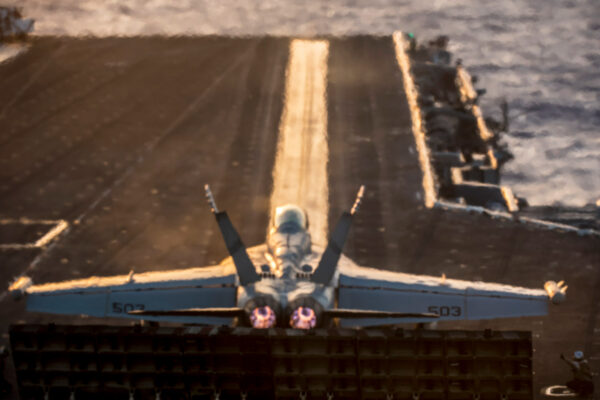
Britain, France and the United States attacked three targets in Syria last night in retaliation for a suspected chemical attack by Bashar al-Assad:
- A scientific research center in the Damascus area.
- A chemical weapons storage site west of Homs, which Chairman of the Joint Chiefs of Staff General Joseph Dunford said was “the primary location of Syrian sarin … production equipment.”
- A chemical weapons equipment storage facility and command post close to the second target.
American defense secretary James Mattis called Friday’s attack a “one-time shot” and emphasized that the strikes weren’t aimed at Assad’s protector, Russia.
President Donald Trump, however, singled out Iran and Russia for their support of Assad.
“What kind of nation wants to be associated with the mass murder of innocent men, women and children?” he asked. “We are prepared to sustain this response until the Syrian regime stops its use of prohibited chemical agents.”
Weapons involved
- American B-1 bombers and at least one American warship in the Red Sea. Officials did not say from where the bombers operated, but the Air Force showed footage earlier this month of B-1s arriving in Qatar.
- Four Royal Air Force Tornado GR4s operating out of Cyprus.
- Rafale fighter jets flying directly from France.
- France also fired cruises missiles from frigates in the Mediterranean Sea, according to CNN.
General Dunford said that more than twice as much ordnance was used as in last year’s cruise-missile strikes.
Reactions
- Canada: “Canada supports the decision by the United States, the United Kingdom and France to take action to degrade the Assad regime’s ability to launch chemical weapons attacks against its own people.”
- Germany: “The military operation were necessary and appropriate in order to uphold the effectiveness of the international ban on the use of chemical weapons and to warn the Syrian regime against further violations.”
- Italy: “This was a limited and targeted action to strike the capacity of building or diffusing chemical weapons. It cannot and should not be the start of an escalation.”
- Spain: “The response to these atrocities is legitimate and proportionate.”
- NATO: This will reduce the regime’s ability to further attack the people of Syria with chemical weapons.
- Russia: An act of aggression against a sovereign state that is on the frontline in the fight against terrorism was committed without a mandate from the UN Security Council and in violation of the UN Charter and norms and principles of international law.
- Iran: “This blatant act of aggression is not just on the Syrian soil, but on the stability of the entire region.”
Analysis
- Frederic C. Hof: There is no education in the second kick of a mule. This time Washington must make it clear to the Kremlin that mass murder by state terrorists is the issue; that the murder weapon per se is not the crime. Anything short of decisive diplomatic follow-up will render this assault the most meaningless of gestures.
- Fred Kaplan: Friday night’s air and missile attack on Syria was as limited as one might imagine under the circumstances.
- Eric Boehm: The attack commences without two fundamental elements of any hostile engagement against another nation: authorization from Congress and a clear understanding of the mission’s aims.
